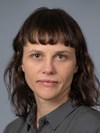Guest Lecturer: Prof. Dimitri Leemans
Dimitri Leemans is currently a professor at the Université Libre de Bruxelles, Belgium. Thanks to a grant from the Knut and Alice Wallenberg Foundation, he will be a Guest Professor at the Department of Mathematics and Mathematical Statistics, Umeå University.


